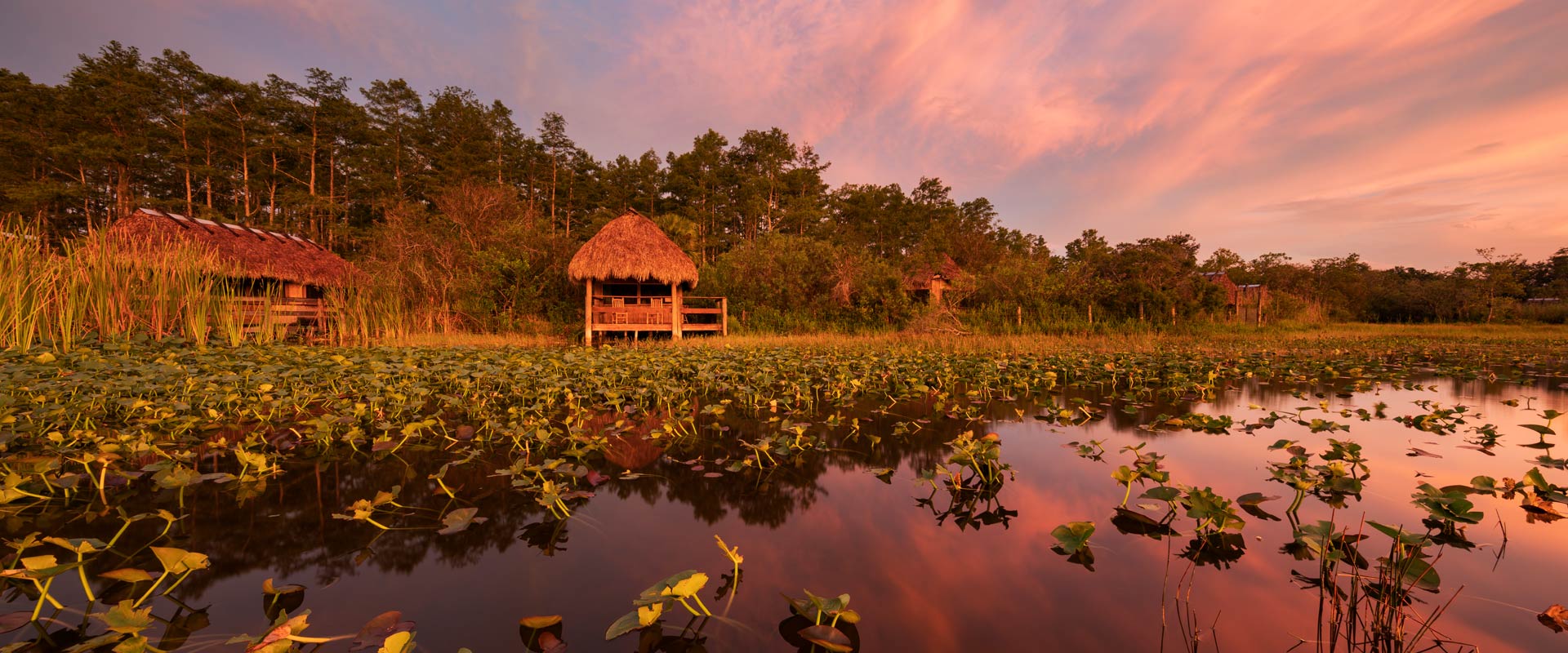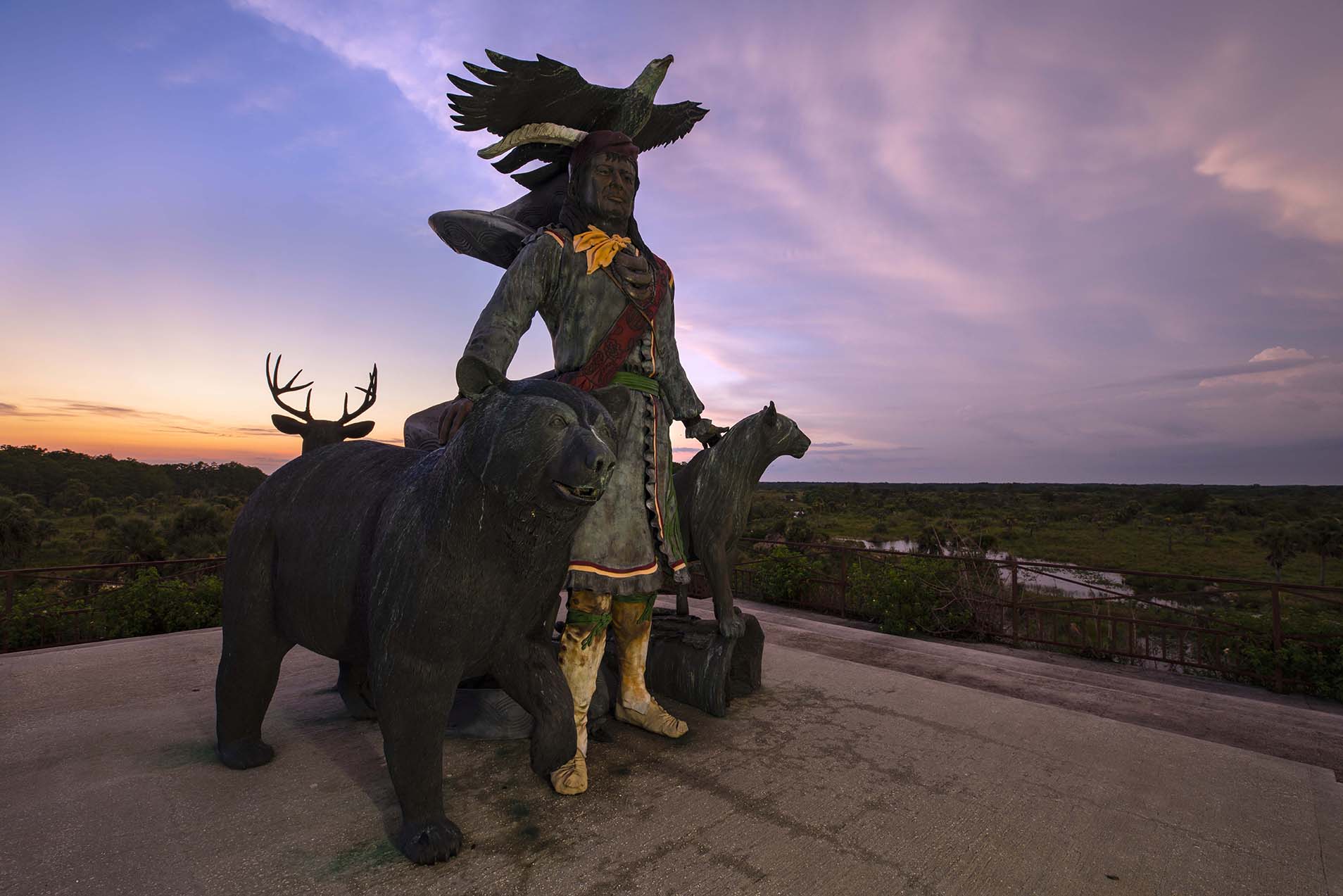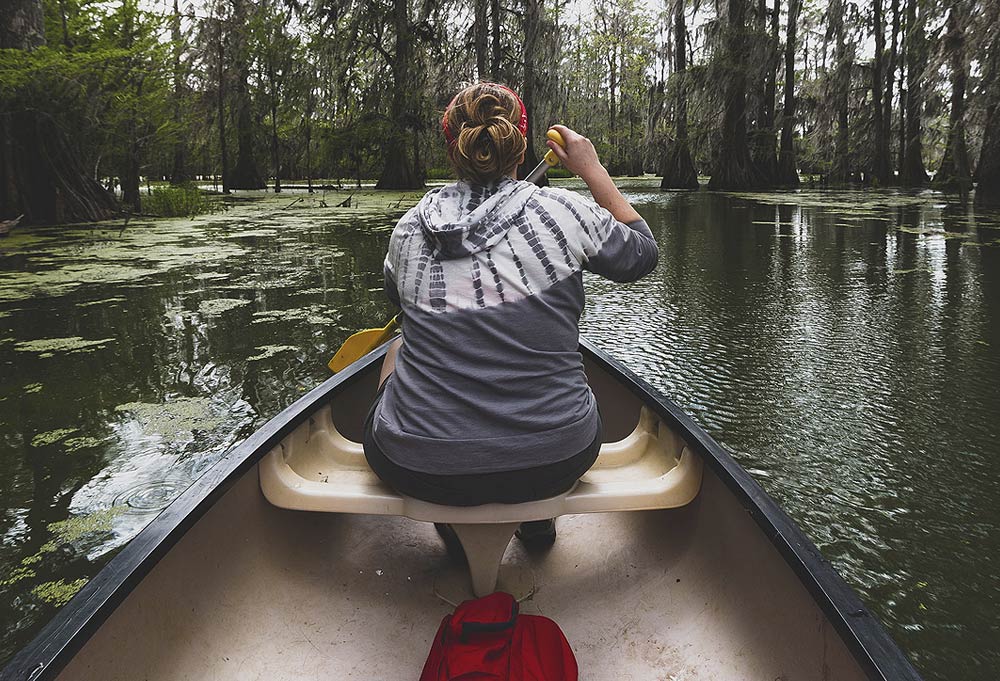Seminoles and the South Florida Ecosystem
The Florida Everglades has existed for thousands of years - not only as home to thousands of animals and other natural plants, but also to the main water supply for eight-million people in south Florida. Over the last century, the Everglades landscape has changed dramatically. Urban development and drainage projects reduced the Everglades to nearly half its original size - this has greatly affected critical habitats, polluted waters and brought invasive species to the area. In the early 1800’s, the ancestors of the Seminole Tribe of Florida were driven by the policies of the American military into the Everglades and Big Cypress Swamp of South Florida – later known as Big Cypress Seminole Indian Reservation. Never surrendering, the Seminoles took refuge in remote areas that the American government regarded as uninhabitable, living a life shaped by fluctuating water conditions. Today, more than ever, The Florida Everglades faces continuing challenges of outside
Top 3 Reasons to Visit the Everglades in the Fall
South Florida is known for abundant sunshine all year long. While our winter season is very popular with retirees and vacationers from the north, it is also very crowded. Fall happens to be a wonderful season to visit the Big Cypress Reservation and the Florida Everglades. Noticeable changes in the air and color of the leaves, the seasonal changes in the Everglades mean variation in wildlife activity and water levels. There are some benefits of taking a Florida Everglades trip in the fall months, and here’s why: 1. The Weather As the sunshine state, it’s no surprise that South Florida temperatures can get hot most of the year. However, fall in South Florida means temperatures drop a few degrees, making conditions in our Everglades setting a little more comfortable – especially for those who aren’t used to the heat like South Florida natives. The lower temperatures are usually accompanied by an enjoyable
Seminole Tribe: Then and Now
During the 20th Century, the United States was home to an estimated 50 million indigenous people. In the early 16th century, approximately 200,000 Natives were living in Florida specifically, a number that today has dwindled nearly tri-fold due to widespread disease, enslavement and war. The powerful journey of Native Americans has been one of resilience and prosperity, and one that eventually led to the creation of the Florida Seminole Tribe. Still, many Americans have yet to discover the rich culture and powerful history that surrounds the Seminoles and their journey into Big Cypress Reservation in the Florida Everglades. Seminoles Then The Seminoles are considered part of the Five Civilized Tribes, dubbed so by early Anglo-European settlers- along with the Cherokee, Chickasaw, Choctaw and Creek tribes. During the 17th and 18th centuries, long before the Seminole tribe was formed, Native American populations shrank due to disease, slavery and murder brought on by
Save the Planet (Too)!
Many exciting changes are underway at the Ah-Tah-Thi-Ki Museum! In addition to our new THPO office building and our Museum re-design, we are also going green. Very green! Upgrading to Green We are doing our part to help conserve the world’s resources. We have eliminated the use of paper plates, plastic silverware, paper cups, and regular cleaning products, and changed to LED lighting, automatic flush toilets, and more. Staff members have been issued water bottles for daily, reusable use. Water coolers, water bottle fillers, and water fountains have been installed and strategically located throughout our facilities to serve both our staff and our visitors. We have set up a composter to “feed” our garden, which we plant several times a year with the help of the Boys and Girls Club afterschool program. Traditional crops are planted which we hope one day will be large enough in volume to help with the nutritional needs of






